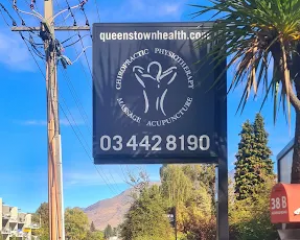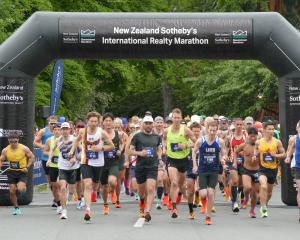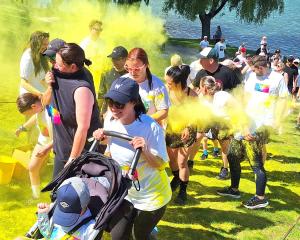Fourteen years ago, landing a plane at Queenstown Airport after dark was thought to be impossible. Yet on May 23 Air New Zealand is scheduled to land its first evening service, followed by Jetstar on June 24. Tracey Roxburgh went behind the scenes at Air New Zealand to find out how it's done.
I'm in the captain's seat and my seatbelt, like one used for a baby, is buckled.
A tiny joystick is perfectly positioned by my left hand.
A screen displaying foreign information is in front of my head; knobs, buttons, switches and levers surround me.
Essentially, I'm about to land an Air New Zealand A320 Airbus at Queenstown Airport at night.
It's actually a simulator, but my palms are still sweaty and my heart's racing.
Queenstown Airport is widely known as one of the most challenging for pilots in daylight, so it must be terrifying at night.
But we've come a long way since May 8, 2002, when the Otago Daily Times reported regular night flights into Wanaka were on the horizon.
Such flights, that article said, were not possible for Queenstown due to the proximity of the mountains.
We've come so far a journalist who has never even seen the flight deck of a commercial plane can apparently land one in complete darkness in the resort - on a simulator at least.
When the airport asked if evening flights were possible several years ago, a working group, comprising representatives from the airport, Airways, airlines and consultants Navigatus, set to work to find out.
It concluded not only was it possible, the risk could be mitigated well below the United States transport accident rates for both day and night.
A list of 67 "controls'', setting out infrastructure required and limits for pilots was established before the hard work began.
A total of $19.65 million was invested in the airport, including work on the runway and the installation and repositioning of 200 lights.
Meanwhile, airlines worked on their safety cases showing how they would comply - Air New Zealand's is 334 pages long.
The national carrier has also tested everything in the Auckland simulator before proving flights began last month. Jetstar's first proving flight was held last night.
For Air New Zealand, a critical aspect has been the technology. The head-up display (HUD), which will be used for evening operations, projects all the information a pilot needs to land a plane safely on a glass screen which sits directly in front of the captain's face, essentially overlaying it on the landscape.
A runway over-run protection system (ROPS) was introduced for the Queenstown evening flights - a system which reduces exposure to overrun risk and, if necessary, provides active protection.
Then there's the required navigation performance (RNP) technology. It uses a GPS, combined with prescribed procedures, enabling pilots to fly a curved, specific path at lower altitudes.
All that, combined with the hundreds of hours of training each pilot has to do before they can land in Queenstown at all, let alone after dark, means passengers have basically been wrapped in cotton wool.
In the simulator, my Air New Zealand co-pilot flicks a couple of switches and I'm magically above the resort with the runway in front of me.
Another button's pushed and I'm plunged into darkness, staring through the HUD, with Queenstown Airport lit up like a Christmas tree beyond it.
My primary goal is to use the joystick to keep the symbol representing my plane in the HUD on what's called the "runway touchdown zone''.
That plane symbol needs to stay in the right place until it's time to raise the nose and land smoothly on the runway.
It's all done with the slightest movements of the comparatively tiny joystick.
For a passenger staring out the window into darkness while feeling the plane drop coming into Queenstown, it may seem a little hairy.
But, as I learned, nothing has been left to chance.
Case in point: a journalist managed two almost perfect landings at Queenstown in the dark with no training.
In fact, the hardest part of the entire experience was working out how to unbuckle the seatbelt.
Queenstown Airport will host a public information session this evening about night flights, beginning at 5.30pm. Representatives from Queenstown Airport, the Civil Aviation Authority, Airways New Zealand and Air New Zealand will make presentations and answer questions from the public.













